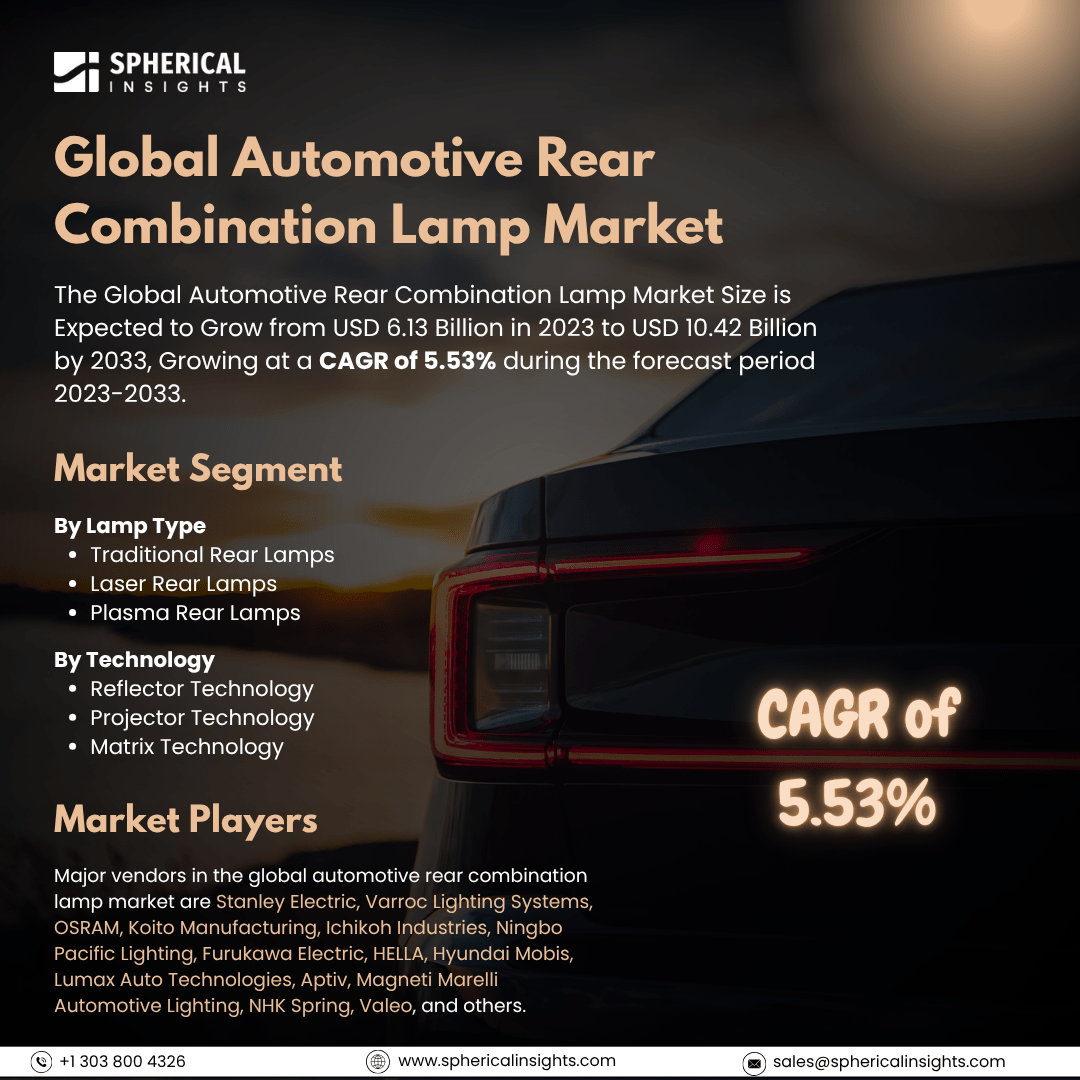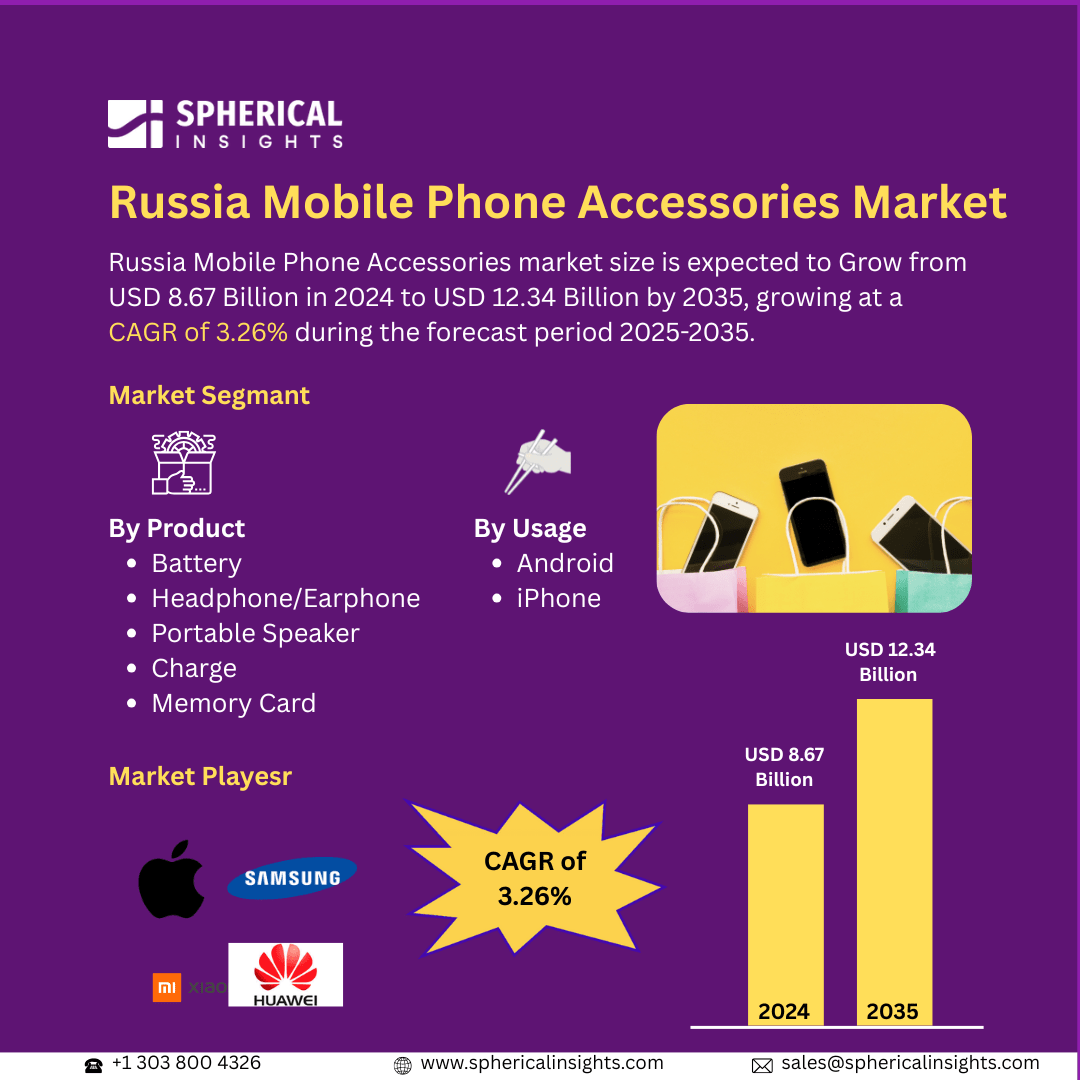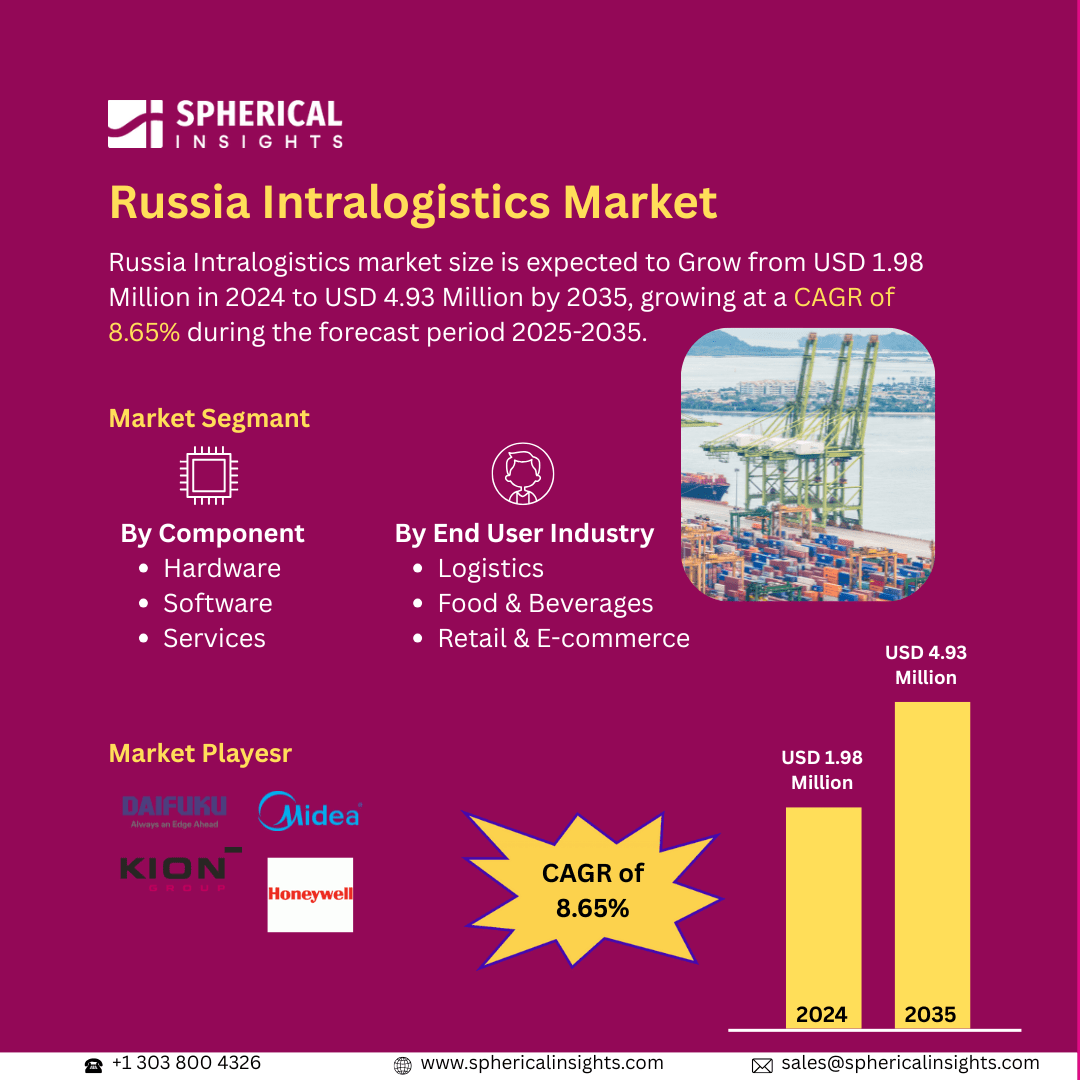Global Automotive Rear Combination Lamp Market Size to Exceed USD 10.42 Billion By 2033
According to a research report published by Spherical Insights & Consulting, The Global Automotive Rear Combination Lamp Market Size is Expected to Grow from USD 6.13 Billion in 2023 to USD 10.42 Billion by 2033, Growing at a CAGR of 5.53% during the forecast period 2023-2033.
Browse 210 market data Tables and 45 Figures spread through 190 Pages and in-depth TOC on the Global Automotive Rear Combination Lamp Market Size, Share, and COVID-19 Impact Analysis, By Lamp Type (Traditional Rear Lamps, Laser Rear Lamps, Plasma Rear Lamps), By Technology (Reflector Technology, Projector Technology, Matrix Technology), And By Region (North America, Europe, Asia-Pacific, Latin America, Middle East, And Africa), Analysis And Forecast 2023 - 2033
The worldwide automotive rear combination lamp market refers to the industry involved in the production and distribution of rear combination lamps for vehicles. These lamps typically combine multiple lighting functions into a single unit, such as tail lights, brake lights, fog lights, direction indicators, and reversing lights. The market is driven by the demand for improved aesthetics, energy-efficient solutions, and enhanced safety features. Moreover, this market includes the adoption of LED and OLED technology for better visibility, durability, and energy efficiency, which open up the market expansion. Additionally, the integration of smart lighting systems, such as adaptive brake lights and turning indicators, is gaining popularity to boost vehicle communication and driver safety. The rise in electric and hybrid vehicles also creates opportunities for rear combination lamp market growth. However, market acquisition faces several obstacles, like a lack of quality control and testing requirements and prize volatility for raw materials.
The laser rear lamps segment accounted for a significant share of the global automotive Rear combination lamp market in 2023 and is anticipated to grow at a rapid pace during the forecast period.
On the basis of lamp type, the global automotive rear combination lamp market is categorized into traditional rear lamps, laser rear lamps, and plasma rear lamps. Among these, the laser rear lamps segment accounted for a significant share of the global automotive rear combination lamp market in 2023 and is anticipated to grow at a rapid pace during the forecast period. This segmental growth is attributed to the market expansion because of advanced features and gorgeous aesthetic appearance.
The reflector technology segment held the largest share of the global automotive rear combination lamp market in 2023 and is projected to grow at a substantial CAGR over the forecast period.
On the basis of the technology, the global automotive rear combination lamp market is classified into reflector technology, projector technology, and matrix technology. Among these, the reflector technology segment held the largest share of the global automotive rear combination lamp market in 2023 and is projected to grow at a substantial CAGR over the forecast period. This segment growth contributed to the market expansion due to its affordability for manufacturing and easy handling.
North America is anticipated to hold the largest share of the global automotive rear combination lamp market over the forecast period.
North America is expected to hold the greatest share of the global automotive rear combination lamp market over the forecast period. The regional market for automotive rear combination lamps is dominated due to high technological adoption and developed infrastructure in the automotive industry. Market expansion in the region is further aided by the expanding trend of car customization and the existence of a strong aftermarket. Further, energy-efficient and aesthetically pleasing rear combo lights will become more in need as the use of electric vehicles increases.
Asia Pacific is projected to grow at the fastest CAGR growth of the global automotive rear combination lamp market over the forecast period. The market's expansion throughout the region is further accelerated due to the rapid expansion of the automotive industry in countries like China, India, and Japan. The presence of major automotive manufacturers and suppliers with government initiatives promoting the adoption of electric and hybrid vehicles are driving the demand for advanced rear combination lighting systems.
Company Profiling
Major vendors in the global automotive rear combination lamp market are Stanley Electric, Varroc Lighting Systems, OSRAM, Koito Manufacturing, Ichikoh Industries, Ningbo Pacific Lighting, Furukawa Electric, HELLA, Hyundai Mobis, Lumax Auto Technologies, Aptiv, Magneti Marelli Automotive Lighting, NHK Spring, Valeo, and others.
Key Target Audience
- Market Players
- Investors
- End-users
- Government Authorities
- Consulting And Research Firm
- Venture capitalists
- Value-Added Resellers (VARs)
Recent Development
- In September 2024, Forvia Hella launched its first RGB LED rear combination lamp with full-color light animations in China. This innovative lamp can generate 256 different color variants from the basic shades of red, green, and blue. It's being used in the new all-electric luxury C-class sedan Z10 of LYNK & CO, a brand of the car manufacturer Geely Auto Group.
Market Segment
This study forecasts revenue at global, regional, and country levels from 2023 to 2033. Spherical Insights has segmented the global automotive rear combination lamp market based on the below-mentioned segments:
Global Automotive Rear Combination Lamp Market, By Lamp Type
- Traditional Rear Lamps
- Laser Rear Lamps
- Plasma Rear Lamps
Global Automotive Rear Combination Lamp Market, By Technology
- Reflector Technology
- Projector Technology
- Matrix Technology
Global Automotive Rear Combination Lamp Market, By Regional
- North America
- Europe
- Germany
- UK
- France
- Italy
- Spain
- Russia
- Rest of Europe
- Asia Pacific
- China
- Japan
- India
- South Korea
- Australia
- Rest of Asia Pacific
- South America
- Brazil
- Argentina
- Rest of South America
- Middle East & Africa
- UAE
- Saudi Arabia
- Qatar
- South Africa
- Rest of the Middle East & Africa



